Search
Search Results
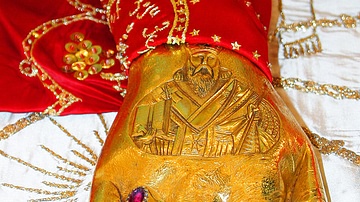
Image
Right Hand of Saint Gregory the Illuminator
The preserved right hand of Saint Gregory the Illuminator (d. c. 330 CE), first bishop of the Armenian church. (Museum of the Holy See of Cilicia, Antelias, Lebanon)

Article
Martin Luther's 95 Theses
Martin Luther's 95 Theses of 31 October 1517, although they have since come to represent the beginning of the Protestant Reformation, were not written to challenge the authority of the Roman Catholic Church but were simply an invitation to...
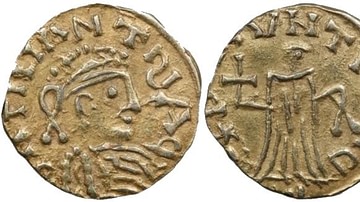
Definition
Guntram I of Orléans
Guntram I (also given as Gontrand, Gunthram, or Gunthchramn) was a Merovingian king who ruled over the Frankish kingdom of Orléans, later referred to as Burgundy, from 561 to 592. He often took on the role of mediator in the disputes between...
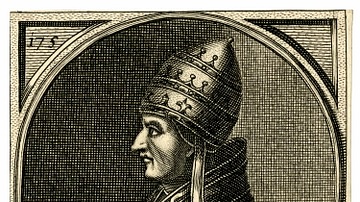
Image
Pope Innocent III
Pope Innocent III (not to be confused with anti-pope Innocent III), r. 1198-1216 CE, is depicted in this print from Chronologia Summorum Romanorum Pontificum, published in 1675 CE. The text at the bottom reads "Innocent III, ". Measures 120...

Definition
Clovis I
Clovis I (or Chlodovech, 466-511/513 CE), king of the Franks, is considered the founding father of the Merovingian Dynasty, which would continue for over 200 years. Clovis became king at the age of 15, and by the time of his death 30 years...

Image
Tiara of Pope Pius IX
The tiara of Pope Pius IX (in office 1846-1878). Made in 1854. Made of a trio of gold crowns set with diamonds, emeralds, sapphires, pearls, and other jewels around a silver-thread fabric. It measures 35 cm (13.7 in) in height and diameter...
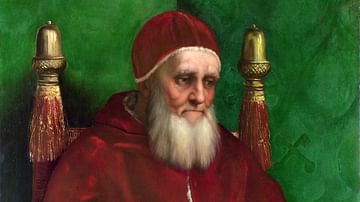
Image
Pope Julius II by Raphael
A portrait of Pope Julius II (r. 1503-1513 CE) by the Italian Renaissance artist Raphael, c. 1512 CE. (National Gallery London)
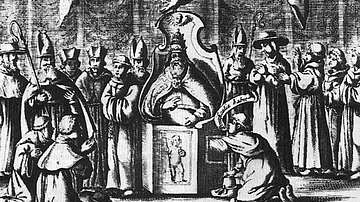
Image
Physical Examination of a New Pope
A 1645 illustration showing a cardinal checking that Pope Innocent X (in office 1644-55) is indeed a man.

Article
Cats in the Middle Ages
Cats in the Middle Ages were generally disapproved of, regarded as, at best, useful pests and, at worst, agents of Satan, owing to the medieval Church and its association of the cat with evil. Prior to the widespread acceptance of Christianity...
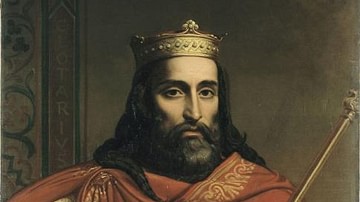
Definition
Chlothar I
Chlothar I (l. c. 498-561) was a Merovingian king of the Franks, the second to rule over a unified Frankish kingdom after his father, Clovis I (l. c. 466-511). When Clovis died in 511, his kingdom was divided up between his four sons, but...